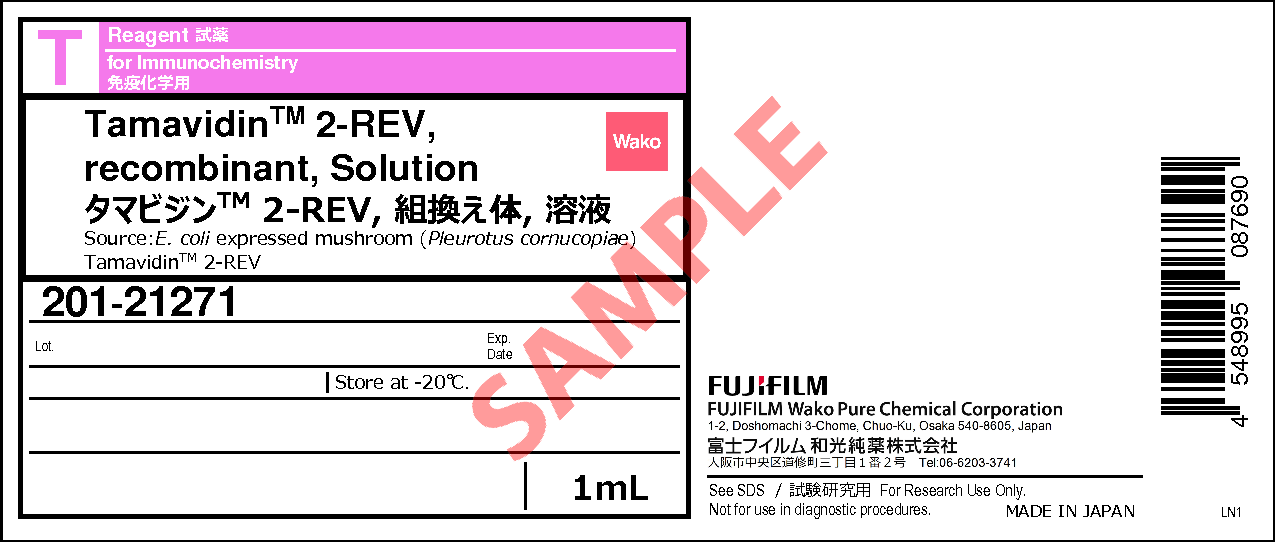Tamavidin(TM)2-REV, recombinant, Solution
|
Comparison
|
Product Number
|
Package Size
|
Price
|
Inventory
|
|
|---|---|---|---|---|---|
|
|
|
1mL
|
|
In stock in Japan |
Document
Overview / Applications
| Outline | This product is for research use only. Do not administer it to human. Tamavidin2-REV is a soluble protein made by modifying Tamavidin2, an avidin-like biotin-binding protein cloned from Pleurotus cornucopiae, an edible mushroom. This approximately 15.5 kDa tetramer comprises four subunits that each possesses a biotin binding site and five tyrosine residues. Like avidin and strepavidin, Tamavidin molecules can be coated on solid phase matrices such as plates and magnetic beads for the immunodetection of biotin-labeled compounds and enzymes. Biotin affinity of this product can be reversed through substitution of certain amino acids, which causes biotin bonds to break when excess biotin is added. [References] 1) Takakura, Y. et al., "Tamavidin 2-REV : An engineered tamavidin with reversible biotin-binding capability.", J. Biotechnol., 164(1), 19-25 (2013). 2) Motani, K. et al., "BioID screening of biotinylation sites using the avidin-like protein Tamavidin2-REV identifies global interactors of stimulator of interferon genes (STING).", J. Biol. Chem., 295(32), 11174-11183 (2020). [Product Informations] Protein concentration: approx. 1mg/mL Formulation: 20 mmol/L Potassium Phosphate Buffer (pH 7.0) Isoelectric point (pI): approx. 7.0 Thermal stability: Tm= approx. 80 degrees C Source: E. coli expressed mushroom (Pleurotus cornucopiae) Tamavidin2-REV. |
|---|
Property
| Appearance | liquid |
|---|---|
| Origin / Source | [Source]E. coli expressed mushroom (Pleurotus cornucopiae) TamavidinTM 2-REV |
Manufacturer Information
Alias
For research use or further manufacturing use only. Not for use in diagnostic procedures.
Product content may differ from the actual image due to minor specification changes etc.
If the revision of product standards and packaging standards has been made, there is a case where the actual product specifications and images are different.




